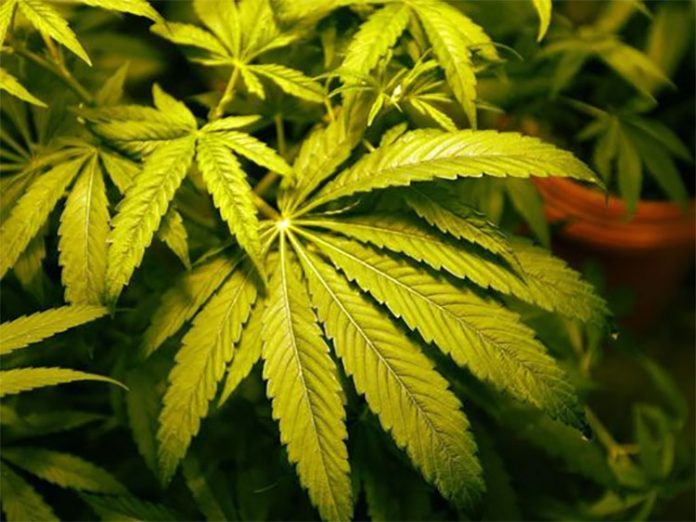As of 1 January, Denmark now allows the use of medical cannabis for patients suffering from various illnesses.
The four year-trial was authorized on 18 December by the parliament in Copenhagen, in a move which also licensed some companies to grow and produce the drug in the Scandinavian country.
Cannabis is increasingly recognized as a valid tool to fight pain by the international medical and scientific community.
Cannabis-based medicines are used for a wide range of illnesses, including multiple sclerosis, HIV, epilepsy, side-effects from chemotherapy and also chronic pain and glaucoma.
Capsules, cannabis extract as a mouth spray, and dried cannabis flowers for vaporizing or teas are the main authorized medicines in the EU, a 2017 report by the European Monitoring Centre for Drug and Addiction (EMCDDA) states.
By contrast, no country authorizes the smoking of cannabis for medical purposes – given the risks that smoking poses to health, especially if combined with tobacco.
In the EU, only Austria, the Czech Republic, Finland, Germany, Italy, Portugal, Poland and Spain currently authorize marijuana’s use as a medicine – while a few other states are planning legislation on the issue.
According to Vincenzo Costigliola, president of the European Medical Association, which represents doctors, there is a “growing focus” on fighting pain, despite the cloudy legal status of cannabis.
The issues around medical cannabis often gets lumped together with the debate around the drug’s recreational use, which is illegal in all member states – although small amounts for personal use are decriminalized in member states such as the Netherlands, Austria, Italy and Luxembourg.
The issue, said Costigliola, is that “we have moved from considering cannabis only as a drug, to rediscovering it as a medicine.”
Currently in the EU, a number of legal, socially-accepted medicines – especially pain relief drugs – are actually chemically-related to illegal substances like opium or cocaine.
Yet for cannabis, however, there is still that “stigma”, Costigliola noted.
This status is pointed out by the EU’s European Medicines Agency (EMA), which states that since cannabis produces “psychoactive activity”, its use as medicine should observe member states’ legal provisions, including the “control of the use of narcotic and psychotropic substances”.
European countries are bound to control cannabis following their obligations under three United Nations drug control conventions, that instruct them to limit drug supply, and drug use only for “medical and scientific purposes”.
At the EU level, there are no harmonized laws on both recreational or medical cannabis use and member states decide their own legislation on it.
However, according to the treaties the EU complements the domestic action of member states in reducing drugs-related health damage through “information and prevention”.
It has also some legislative competences, but mainly regarding illegal drug-trafficking and “particularly serious crime with a cross-border dimensions”.
Growing club?
During the course of 2017, a number of additional EU member states announced or proposed changes to legislation on the production and use of medical cannabis – or went as far as legalizing it.
In Athens, prime minister Alexis Tsipras announced in June that Greece is “now included in countries where the delivery of medical cannabis to patients in need is legal” – but a law has still to be tabled in the Greek parliament.
In Ireland, a ‘cannabis for medicinal use regulation bill’ is currently being discussed and will enter in the third and last stage of debate early in 2018.
In both countries medical reports endorsing the effectiveness of cannabis for pain relief were commissioned by the government prior to the political decision.
And since November 2017, in Poland cannabis-based medicines, to be made at pharmacies using imported ingredients, can be sold.
Meanwhile in Germany, health state secretary Lutz Stroppe announced in March that seriously ill patients can buy cannabis on prescription – mainly the dried cannabis flower or cannabis extracts – after parliament agreed legalization in January 2017.
Italian shortage
In fact, Italy is currently experiencing a serious medical cannabis shortage, since not enough marijuana plants for medical use are grown, patients and NGOs report.
Patients had to resort to the “black market and self-cultivation” as a result of the shortage, the Italian Association for Civil Liberty & Rights (CILD) reported in December.
To tackle the lack of plants, the Italian ministry of defense (responsible for the secure growing of medicinal cannabis) was forced to look abroad to buy some 100 kilos of marijuana in November.
Burden of certification
In the EU, explained Costigliola, if a company decides to sell a medicine in a country, the medicine must be registered in that country – while if it decides to do so at European level “it registers itself at European level”.
Cannabis-based medicines in Europe that have been approved either by the European Medicines Agency (EMA) or national authorities currently number four – sold under the brand names Sativex, Bedrocan, Marinol, and Cesanet.
One of them (Sativex) has been approved by the EMA as a treatment for “symptoms of multiple sclerosis” in 18 European countries.
Some other substances, derived from cannabis, seem to be in the pipeline. On 29 December, British company GW Pharmaceuticals presented a request to the EMA for selling a cannabidiol medicine for childhood epilepsy.
If we can use these medicines “I can’t see why we are not doing it”, said Costigliola, as this is what “advancement in medicine is.”














